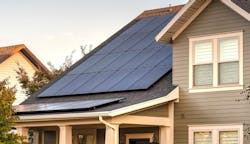A Burgeoning Focus on Energy Retrofits Doesn't Just Benefit Homeowners
Of the approximately 124 million housing units that make up the nation’s housing stock, the ABC Collaborative recently counted more than 21 million single-family homes built before 1980 that need a retrofit. To meet the country’s 2050 sustainability goals, a wide range of energy retrofits are needed in a significant portion of existing homes, Forbes reports.
That opportunity doesn’t just decrease utility costs and boost resale prices for current homeowners, it also creates a pathway for new jobs and the development of new technology, bolstering the economy and lowering the overall carbon footprint of the built environment.
Olivia Mariani serves as the chief marketing officer at Curbio, a company that focuses on renovations to sell homes, and is now talking to sellers about cashing in on energy updates to sell their home faster and to attract environmentally conscious, millennial homebuyers who will pay more for these upgrades.
“Across all markets, according to Zillow housing trends report, 60% of buyers overall wanted energy efficiency, which was very or extremely important,” she said. “And, they will pay up to $15,000 more for a solar powered home.”
